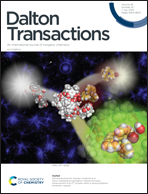Facile synthesis of Co3−xMnxO4/C nanocages as an efficient sulfur host for lithium–sulfur batteries with enhanced rate performance†
Abstract
Capacity reduction mainly caused by the shuttle effect and low conductivity restricts the commercial application of lithium–sulfur batteries (LSBs). Herein, we developed a method to overcome these two obstacles synchronously by designing nitrogenous carbon decorated hollow Co3−xMnxO4/C nanocages as hosts of sulfur. These hosts were derived from manganese doped ZIF-67 by a facile sintering method, which provided polar surface to anchor lithium polysulfides and considerable electronic conductivity. The polar material Co3−xMnxO4 and special hollow frame contribute to efficient synergistic sulfur-fixation, resulting in great cycling stabilities. The manganese elements ensure an efficient conversion among LSPs. At the same time, N-doped carbon provides excellent electrical conductivity, thereby leading to splendid rate performances. Thus, a battery with great stability and high capacity could be achieved. As a result, Co3−xMnxO4/C/S with 66 wt% sulfur content delivered a high initial capacity of 1082 mA h g−1 at 1C, together with a slow average capacity decay of 0.056% per cycle at 10C over 500 cycles. When the average sulfur loading is 1.3 mg cm−2, a capacity of 628 mA h g−1 can be maintained at 5C after 500 cycles.



 Please wait while we load your content...
Please wait while we load your content...